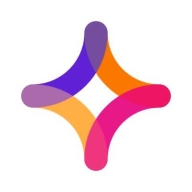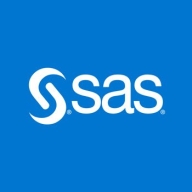

SAS Data Management and Jitterbit Harmony compete in the data integration and management solutions category. While SAS excels in support and comprehensive data capabilities, Jitterbit stands out with its feature set and flexibility.
Features: SAS Data Management provides robust data governance, ensuring data accuracy, quality, and compliance. It offers advanced management capabilities, including data integration and transformation. Jitterbit Harmony is noted for its flexibility and speed, especially with cloud-based architectures. It excels in seamless API integration and rapid data transformation, making it ideal for dynamic market changes.
Room for Improvement: SAS Data Management could enhance its user interface for better accessibility to non-technical users and streamline setup processes. It would benefit from expanding real-time integration capabilities. Additionally, improving scalability options could attract more diverse clientele. Jitterbit Harmony could improve in areas like detailed documentation for complex integrations. Offering more custom reporting options and enhancing support for on-premise systems could widen its appeal.
Ease of Deployment and Customer Service: SAS Data Management is praised for its structured and reliable deployment process, providing extensive support. Jitterbit Harmony offers a more flexible deployment model, which is beneficial for businesses seeking rapid integration with existing systems. While Jitterbit emphasizes agility, SAS's support is often seen as more comprehensive.
Pricing and ROI: SAS Data Management involves significant setup costs but is justified through substantial ROI owing to its comprehensive capabilities. Jitterbit Harmony might present a high initial investment; however, its quick deployment and adaptability often lead to a perceived higher ROI. Despite differing initial costs, Jitterbit's rapid time to value and long-term benefits are appealing to many buyers.
The support for SAS in Brazil is not the best one, but the support in Sweden is really good, as they visit the company and work to solve the issues.
There is significant room for improvement, especially with regard to using a hybrid approach that involves both CAS and persistent storage.
From my experience, SAS Data Management is an expensive tool.
SAS Data Management stands out because of its data standardization, transformation, and verification capabilities.
The best features I appreciate about SAS Data Management tool are that it's easy to create the flows and schedule data, and the tables are not too big, making it easy to control the ETL process, including user access which is also easy to manage in SAS.
| Product | Market Share (%) |
|---|---|
| SAS Data Management | 0.9% |
| Jitterbit Harmony | 0.6% |
| Other | 98.5% |


| Company Size | Count |
|---|---|
| Small Business | 8 |
| Midsize Enterprise | 3 |
| Large Enterprise | 1 |
| Company Size | Count |
|---|---|
| Small Business | 7 |
| Midsize Enterprise | 1 |
| Large Enterprise | 8 |
Jitterbit Harmony offers an advanced integration platform that simplifies data transformation, helps users quickly connect apps, and automates workflows, streamlining complex business processes efficiently.
Designed to meet the high demands of modern businesses, Jitterbit Harmony enables seamless integration across cloud and on-premise environments. By leveraging its powerful tools and user-friendly design, users can accelerate innovation, reduce operational costs, and enhance productivity. It bridges the gap between traditional and emerging technologies, ensuring organizations can adapt quickly to market changes and remain competitive.
What are the key features of Jitterbit Harmony?Jitterbit Harmony finds its application across numerous industries, from enhancing data integration in the healthcare sector to optimizing supply chain logistics in manufacturing. It supports financial institutions by improving transaction processing and facilitates real-time data connectivity in retail environments, making it a versatile choice for diverse industries looking to innovate rapidly.
Every decision, every business move, every successful customer interaction - they all come down to high-quality, well-integrated data. If you don't have it, you don't win. SAS Data Management is an industry-leading solution built on a data quality platform that helps you improve, integrate and govern your data.
We monitor all Data Integration reviews to prevent fraudulent reviews and keep review quality high. We do not post reviews by company employees or direct competitors. We validate each review for authenticity via cross-reference with LinkedIn, and personal follow-up with the reviewer when necessary.